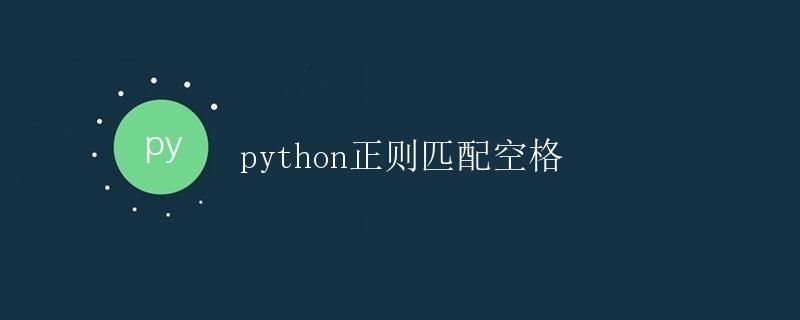Python正则匹配空格

在日常的文本处理中,经常会遇到需要匹配空格的情况,而Python中的正则表达式是一个非常强大的工具,可以帮助我们实现对空格的精确匹配。本文将详细介绍如何使用Python正则表达式来匹配空格,并且给出一些实例代码来帮助你更好地理解。
什么是正则表达式
正则表达式(Regular Expression)是一种描述字符模式的方法,使用单个字符串来描述、匹配一系列符合某个句法规则的字符串。在Python中,我们可以使用re模块来实现正则表达式的匹配操作。
匹配空格的方法
在正则表达式中,空格表示为\s。\s 匹配任意空白字符,包括空格、制表符(Tab)、换行符等。下面是一些常见的匹配空格的方法:
\s:匹配任意空白字符\s+:匹配一个或多个空白字符\s*:匹配零个或多个空白字符\s{n}:匹配恰好n个空白字符\s{n,}:匹配至少n个空白字符
示例代码
下面是一些示例代码,演示了如何使用Python正则表达式来匹配空格:
import re
# 匹配任意空白字符
text = "Hello World"
pattern = r'\s'
result = re.findall(pattern, text)
print(result) # Output: [' ']
# 匹配一个或多个空白字符
text = "Hello World"
pattern = r'\s+'
result = re.findall(pattern, text)
print(result) # Output: [' ']
# 匹配零个或多个空白字符
text = "HelloWorld"
pattern = r'\s*'
result = re.findall(pattern, text)
print(result) # Output: ['', '']
# 匹配恰好3个空白字符
text = "Hello World"
pattern = r'\s{3}'
result = re.findall(pattern, text)
print(result) # Output: [' ']
# 匹配至少2个空白字符
text = "Hello World"
pattern = r'\s{2,}'
result = re.findall(pattern, text)
print(result) # Output: [' ']
运行结果
在上面的示例代码中,我们使用了不同的正则表达式来匹配空格字符,并且打印出了匹配的结果。你可以复制上面的代码到一个Python文件中运行,查看实际的输出。
通过这些示例代码,你可以更好地理解如何使用Python正则表达式来匹配空格字符。
 极客教程
极客教程